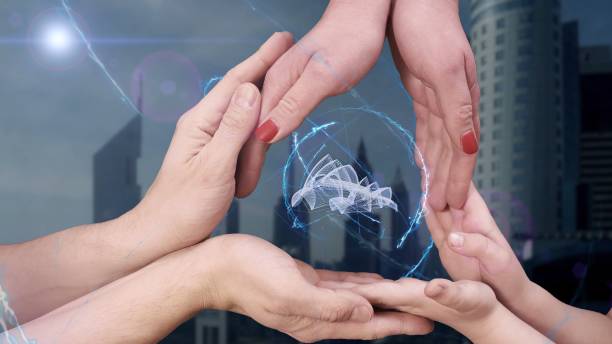Holographic Telepresence: Redefining Remote Communication
The future of telecommunications is unfolding before our eyes, and holographic telepresence stands at the forefront of this revolution. This groundbreaking technology promises to transform how we connect, collaborate, and communicate across vast distances, offering an unprecedented level of immersion and realism in remote interactions.

The concept of holographic communication has long been a staple of science fiction, captivating audiences with its potential to bridge vast distances and create lifelike interactions. However, recent advancements in optics, data transmission, and image processing have brought this once-fantastical idea into the realm of reality. Today, holographic telepresence is poised to revolutionize industries ranging from healthcare and education to entertainment and business.
The Technology Behind Holographic Telepresence
At its core, holographic telepresence relies on a complex interplay of cutting-edge technologies. High-resolution cameras capture detailed 3D images of a person or object from multiple angles. These images are then processed and transmitted in real-time over high-speed networks. At the receiving end, specialized display systems recreate the 3D image, projecting it into a physical space.
One of the key challenges in holographic telepresence has been achieving low latency and high fidelity in image transmission. Recent breakthroughs in data compression and ultra-fast networks have significantly reduced lag times, enabling near-instantaneous communication. Additionally, advancements in light field displays and volumetric projection technologies have dramatically improved the quality and realism of holographic images.
Applications Across Industries
The potential applications of holographic telepresence span a wide range of industries and use cases. In healthcare, for instance, this technology could enable remote surgical consultations, allowing specialists to virtually examine patients and guide procedures from anywhere in the world. Educational institutions could use holographic telepresence to bring guest lecturers into classrooms or conduct virtual field trips to inaccessible locations.
In the business world, holographic telepresence promises to transform remote meetings and collaborations. Imagine a board meeting where participants from different continents appear to be seated around the same table, able to make eye contact and read body language as if they were physically present. This level of immersion could greatly enhance communication and decision-making in global organizations.
The entertainment industry is also exploring the possibilities of holographic telepresence. Live concerts could feature performances by artists appearing simultaneously in multiple venues around the world. Museums could create interactive exhibits that allow visitors to engage with holographic representations of historical figures or rare artifacts.
Overcoming Challenges and Limitations
While the potential of holographic telepresence is immense, several challenges must be addressed before widespread adoption becomes feasible. One of the primary hurdles is the need for specialized hardware and infrastructure. Current holographic display systems are often large, expensive, and require carefully controlled environments to function optimally.
Another significant challenge lies in the bandwidth requirements for transmitting high-quality holographic images in real-time. Even with advanced compression techniques, holographic telepresence demands far more data than traditional video conferencing. As such, the technology’s widespread adoption may depend on the continued development of high-capacity network infrastructure.
Privacy and security concerns also present challenges for holographic telepresence. The technology’s ability to capture and transmit detailed 3D images raises questions about data protection and the potential for misuse. Developing robust encryption and security protocols will be crucial to ensuring user trust and protecting sensitive information.
The Road Ahead: Miniaturization and Integration
As holographic telepresence technology continues to evolve, researchers and engineers are focusing on miniaturization and integration. The goal is to develop more compact, affordable, and user-friendly systems that can be easily integrated into existing spaces and devices.
One promising avenue of research involves the use of meta-materials and nano-photonics to create ultra-thin, flexible holographic displays. These advancements could potentially lead to holographic smartphones or wearable devices capable of projecting 3D images into the user’s environment.
Another area of development is the integration of artificial intelligence and machine learning algorithms to enhance the quality and realism of holographic projections. These technologies could help compensate for network limitations, predict and smooth out movements, and even generate realistic holographic avatars based on limited input data.
Conclusion: A New Era of Human Connection
Holographic telepresence represents a paradigm shift in how we perceive and experience remote communication. As the technology continues to mature and overcome current limitations, we can expect to see its influence grow across various sectors of society. From revolutionizing long-distance relationships to transforming global business operations, holographic telepresence has the potential to create a world where distance truly becomes irrelevant in human interactions.
The journey towards fully realized holographic telepresence is still ongoing, but the progress made in recent years suggests that this technology is no longer a distant dream. As we stand on the brink of this new era in telecommunications, one thing is clear: the way we connect and communicate with one another is about to change dramatically, ushering in unprecedented possibilities for collaboration, education, and human connection across the globe.





